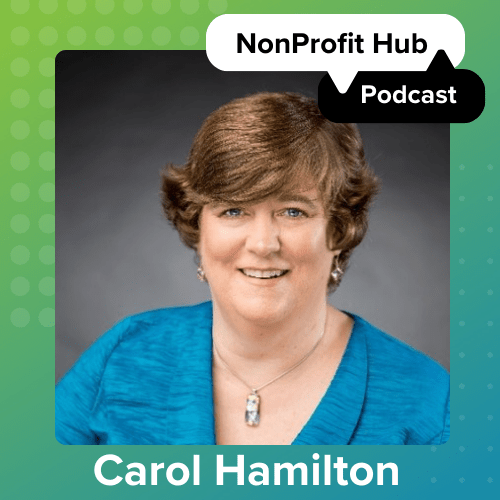If you want to do good work, then you need good tools to get the job done.
A website is one of a nonprofit’s most important tools. It helps you collect donations, spread the word about your mission and get your name out into the world. If your website is shabby, then people might be getting the wrong message about your nonprofit.
The first step to creating your nonprofit’s website can be a scary one. From designing an attractive layout to writing content, there’s a lot that goes into it. Fortunately, with the help of website builders, that job has become a lot easier. They make creating a website so easy that anyone can do it—even a humble nonprofit professional like yourself.
These resources all provide free options, too, so that you can get a feel for the website builder before you consider paying for an upgrade. In your quest for a top-of-the-line website, you’ll hit the jackpot with these tools.
At Nonprofit Hub, we believe websites are an investment, and skimping on quality is rarely the best option. While everyone should invest in their website, we know not every nonprofit can shell out for the robust website they need. To tide you over until you get the gravy train movin’ and shakin’, here are five low-cost website options for nonprofits.
Squarespace
Squarespace is the Apple of the website-building world. It’s simple, clean and polished on the back end and the front. Squarespace leaves out all the hubbub and gives visitors to your site a clear call to action.
Squarespace makes it easy to add new pages and to include new content through galleries, event calendars, blog posts and more. Their donation functionality also lets you accept donations through your website. You can customize your donation page and set suggested contributions for donors. You can also modify email receipts to ensure that each donor gets a personal experience.
As far as structure goes, your customization is more limited here than on other website builders. That’s not a bad thing, though! Squarespace knows their stuff when it comes to the online experience. Keeping some restraints in line for website builders ensures that you aren’t adding too much clutter without realizing it. If you’re okay with giving up some control to maintain an elegant site, then Squarespace is the place to be.
You should use Squarespace if:
- Your nonprofit has an arsenal of stand-out photos to use. Squarespace’s templates are very visual and photo-heavy. You’ll get the most out of it if you show the people and causes you support instead of just writing about them.
- You want to focus on blogging. Squarespace is loaded with helpful features to boost your blogging game. It has options for tagging, organizing categories, integrating your blog with Disqus and customizing your URLs. Their post editor is one of the easiest to use, too.
- Your organization has some cash to splash. We know that money doesn’t grow on trees in the nonprofit sector, but if you decide to spend a little extra somewhere, then your website is a great investment. Squarespace doesn’t offer any free website options, but they do give free trials if you want to sample the features before diving into a paid plan. If you’re looking to get the most bang for your buck, Squarespace has some tips for creating an awesome nonprofit website on a shoe-string budget.
Weebly
If you’re looking for a little more control over your website than Squarespace provides, Weebly is your next best option. Weebly sites are created using a What You See Is What You Get (WYSIWYG) system, meaning you can arrange pieces on a page visually. You can edit directly on your website by dragging and dropping elements to the template.
Weebly’s App Center also has loads of apps that you can install on your site. There, you’ll find widgets for everything under the sun—from syncing up your social media accounts to creating dynamic team pages. They even have a category of apps designed by Weebly so that you can add new functions without having to sacrifice a cohesive design.
You should use Weebly if:
- You want more control—with a safety net attached. On Weebly, you can drag and drop all of the elements on your pages to create something of your own. The elements automatically fit into columns and rows to make sure there’s still a neatness to your site and a method to your madness. From there, you can customize each element even further to fit your website’s theme.
- Your site is centered around donations. Weebly is loaded with different options to personalize your donation process. Although visitors can’t donate directly through Weebly, you can install the DonorBox app to accept one-time and recurring donations set suggested gift amounts and to collect donor information.
- Video is in your wheelhouse. Weebly recently launched video headers on their site, which are great ways to bring your website to life. If you upgrade to a Pro account, you can add video backgrounds to your pages and encourage visitors to keep scrolling.
Wix
Still craving more control over your site’s layout? Wix has you covered. Out of these website builders, Wix is one of the most adaptable—and it’s great for website beginners. Wix also uses the WYSIWYG system, but unlike on Weebly, you can drag and drop elements to wherever you want. Wix has some tricks in place to make sure that practice doesn’t go awry, too. For example, if you make a block of text larger, Wix will adjust the other elements in your template to make sure nothing overlaps and each element gets its day in the sun.
You should use Wix if:
- You want to keep your options open. Wix hits a grand slam when it comes to flexibility. It has lots of choices to give you maximum control over your site’s layout. All those customization choices can make the builder seem a bit bulky—if you’re searching for simplicity and ease in a website builder, then Wix may get overwhelming. If you want options up the wazoo to make a site that’s uniquely your own, then Wix is the tool for you.
- You have an idea in mind. With all of Wix’s options, it’s easy to get carried away with your website design. If you go this route, it’s helpful to sketch a framework for your site first to decide the essentials that need to be on each page. From there, you can sprinkle in the fun stuff.
- You’re PayPal savvy. Wix doesn’t offer a platform for onsite donations. Instead, you can install a button that sends your website’s visitors to PayPal to make a gift. You can’t customize email receipts on PayPal, though, so make sure to create a plan for following up with and thanking donors that give through your website.
WordPress
You’ll get the most out of your website with WordPress, but the learning curve is a bit steeper here. The platform is split into two sections: My Site and WP Admin. My Site functions as a website builder, and WP admin works as a management system, keeping your continuous content (like blog posts) organized in one place. Having two interfaces can get a little complex, but once you get the hang of it, your website will be well-equipped for your nonprofit.
WordPress’s major setback for nonprofits is that there isn’t a donation platform built into the site. Instead, you have to upgrade to a business plan to install a donation plugin. Bummer. If you’re ready to invest in a website builder, though, WordPress can give your site endless capabilities. With its paid account options, you can add plugins and customize to your heart’s desire. If you want to take a quick look at how WordPress works, you can glance at their introduction to using the site.
You should use WordPress if:
- You’re big on blogging. Out of these website builders, WordPress is the most well-equipped for blogging. You can add categories and tags, edit each post’s URL, moderate comments and much more. If you only blog every once in awhile, you can easily get away with the blogging platforms on other website builders. If blogging is a regular part of your schedule, though, WordPress is a fantastic asset.
- You want to amp up your website—not just with design. The plugins on WordPress are one of this builder’s best features. At its core, you can design a simple, clean site on WordPress. From there, you can install plugins to add features on the front and back end of your site. With a handful of plugins, your website can become a powerful tool.
- You have a developer whiz on your team. If someone on your team is a web genius, you can put them to work here. WordPress has options for editing HTML, boosting search engine optimization on your site and installing countless helpful plugins. Your website wizard will be able to navigate all of that with ease and get the most out of WordPress for your nonprofit.
Strikingly
Strikingly specializes in building one-page websites, so they’re at the top of their game in this area. If you’re shooting for simplicity in structure, Strikingly is as good as it gets. You can make your web page as long or as short as you want by adding new content sections.
You should use Strikingly if:
- You want a no-frills approach. If you need a simple platform for creating a simple site, Strikingly is your best bet. The builder provides straightforward information sections and room for large photos. There aren’t many customization options, though, so you might want to explore other options if you’re in need of a more tailored look.
- You’re short on content. If your website is minimalistic, a one-page layout can make your content easy to digest all at once. Say you just have a few staff members or a concise “About” section—instead of having separate, plain pages, you’ll be better off consolidating them into one dynamic page. Your site will look richer and full if your smaller pieces of information are part of a larger theme.
Firespring
Firespring provides beautiful websites, marketing materials and technology for thousands of nonprofits all over the world. They’ve also been in the education game for over a decade, offering free webinars, how-to guides, blog posts and more. Not only will they build you a visually stunning, easy-to-use site, but they’ll give you tips and tricks on how to keep it that way.
You should use Firespring if:
- You want to easily update your website. Firespring’s website builder was designed specifically for those who, well, aren’t website builders. You can make changes easily and quickly and in real time without the need for a programmer or web developer.
- You want to work with people familiar with nonprofits. Firespring has been building websites for organizations like yours for more than a decade. You can trust that they understand your struggles and have your best interests in mind.
Have enough information yet? It’s time to dip your toes in the water! Plan a meeting with your team, decide what your organization needs out of a website, choose a site builder and get cookin’. You can explore websites that other nonprofits have created to get some inspiration of your own, too. Good luck!






